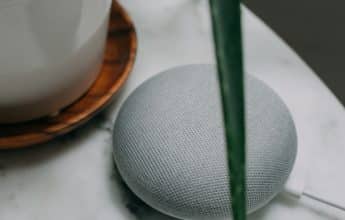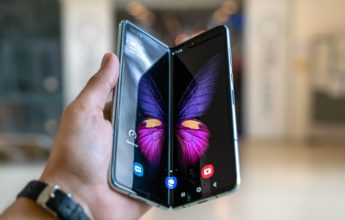Did you know that 90% of users have stopped using an app because of poor performance? This statistic proves that high-quality user experience (UX) design is critical to success. The only way to ensure exceptional product performance is to understand the product’s users, research and solve their pain-points, and explore latent behaviors and needs.
While UX design principles remain relatively static, the trends and techniques are constantly changing. In this post, we will identify and discuss eight key UX design trends we predict will make significant strides in 2022.
UX Design Trends for 2022
AR & VR
Over the last several years, we’ve seen a shift towards augmented reality (AR) and virtual reality (VR) in UX design trends. The evidence is everywhere, from the Microsoft HoloLens, to IKEA Place, Apple’s LiDAR scanners, and the rise of the Metaverse.
AR and VR technology allows users to integrate digital components into their real-world experiences. What’s more, this trend may be ideal for a wide range of industries. For example, eCommerce already uses AR to allow customers to “try on” clothing at home.
AR and VR have the unique ability to engage with a user’s needs in real-time and take their engagement to the next level. Businesses in media and entertainment, travel, science, health, real estate, education, and more, have an incredible opportunity to add AR or VR to their UX design this year.
Voice User Interface Interaction
Another major UX design trend on the rise is voice user interfaces (VUIs). Although the technology behind VUIs has been around since at least the ‘80s, it’s only recently broken into the mainstream. In fact, according to data from Statista, 20% of users from western countries reported that they use a digital voice assistant several times a day.
However, a unique set of challenges will hinder a complete voice take-over.
Accessibility issues are the primary concern. Current voice technologies have difficulty accurately identifying instruction when heavy accents or background noise is present. Secondly, a VUI allows actions to be executed based on spoken commands. Changing interfaces require UX designers to abandon old techniques and mindsets for designing mobile app experiences. While VUIs won’t entirely take over mobile experiences, the technology shows significant potential for enabling further advancements in consumer AI technologies.
3D & Advanced Animation
Today’s mobile devices are equipped with performance hardware that can handle animation and 3D more efficiently than ever before. Advanced animation and 3D can make user interactions more alluring and exciting with the proper approach. With the right implementation, this trend can take your app far beyond the aesthetic “wow-factor.”
3D and advanced animations deliver a ton of data – from explaining state changes to confirming actions and even adding a little rhythm to user interactions.
As mobile devices improve, mobile app developers can create more and more advanced animations. These motions should become an essential and well-planned part of your brand’s positioning.
Even Deeper Personalization
2021 marked a substantial shift towards more profound and sophisticated personalization in mobile UX. As artificial intelligence (AI) and machine learning (ML) continue to take giant strides in understanding user behavior and interaction, mobile products will become increasingly personalized. When it comes to UX design, the key is to design something flexible for the individual. Functionality and in-app content should be defined by user data, such as location, purchase behavior, online communities, events, and personal calendar.
Brands such as Netflix already do this, for example, by curating custom suggestions based on previous watching behaviors. These suggestions are unique to the user and provide a service unique to them. UX designers need to tap into AI and ML personalization opportunities to supply variable content where appropriate.
Dark Themes
One of the most surefire UX design trends for 2022 is the dark theme. Although this trend isn’t exactly new – a 2020 Android Authority poll found 82% of their readers used dark themes when possible – but now more and more companies are rolling out dark themes.
Why? Not only is the dark background and light font sleek, crisp, and modern, it provides two critical advantages to UX: it improves battery life (especially with OLED screens) and reduces blue-light exposure, which can help minimize eye-strain and promote better sleep.
Accessibility & Inclusive Design
When it comes to accessibility and inclusion, the University of Cambridge has got it exactly right:
“Every design decision has the potential to include or exclude customers. Inclusive design emphasizes the contribution that understanding user diversity makes to informing these decisions, and thus to including as many people as possible. User diversity covers variation in capabilities, needs and aspirations.”
In 2022, UX designers need to cater to as broad an audience as possible. Each design decision can either make a user’s life easier, or make them feel left out. That means taking into consideration potential users’ needs and points of view. Nielsen Norman Group recommends:
- Using ALT texts for images for people with visual disabilities.
- Creating image maps.
- Encoding information with relative size texts.
- Turning off sound should not affect the website UX.
- Website or app elements should not require precise tapping.
But this trend goes beyond accessibility for all users’ abilities. Every user is different, and you’ll need to keep their perspectives in mind. Consider default avatar images, for example. If an individual enters “female” in the gender field, they’ll likely end up with a default avatar of a young person with long hair and feminine features. But not every female-identifying user will relate to that image.
To do this right, think of people in more abstract terms. Rather than using traditional gendered images, try more symbolic avatars. Your copy should match this idea as well. For example, go for gender-neutral terms like “friends” or “users.”
Data Visualization
Data visualization, the art of putting important data into a visual context, has become both invaluable and expected by users. This is thanks to its ability to improve how users interact with apps, and can help create a more trusting relationship.
The clearest and most obvious example of this done successfully is Spotify’s yearly “Spotify Wrapped.” If you’re not familiar with this feature, it’s simply a compilation of data on the artists and songs each user has listened to most over the last year. But Wrapped isn’t simply a spreadsheet with boring numbers; the information is presented in an engaging and dynamic visual format that tells a story.
Dynamic and personalized experiences like Spotify Wrapped do more than present data in easily digestible ways (like charts), and instead create a narrative around each user’s data. This narrative is fantastic for driving engagement, communicating company values, and bringing in new leads.
Micro-Interactions
Micro-interactions are another popular UX design trend that’s sure to see continued growth throughout 2022. From the “Like” button on social media platforms, to innovative scroll bars, micro-interactions are visual or audio effects that help users navigate your app. Bets10
While each of these design elements are rather small, they can have a massive impact on user experience. Micro-interactions help create the atmosphere or mood needed, or bring users’ focus to specific areas of the interface. In a nutshell, they make things fresh and more interesting.
The one major pitfall involved with micro-interactions comes into play when you’re too focused on being trendy, especially in terms of color pallets or animations. Keep in mind that micro-interactions should explain your app’s functionality and help your users navigate. The most useful micro-interactions include:
- Animated page transitions.
- Animated button tapping.
- Colorful, relevant information presentations.
- Animated content scrolling.
- Loading and processing visualizations.
- Tactile reviews.
The State of UX Design in Mobile App Development
UX design trends continue to take on a less traditional approach as designers adapt to changes in user interactions, preferences, and behaviors and physical changes to the very devices we use. As technology changes, design must also adapt to provide users with a broader range of options so that they can find the ones which fit their specific needs and wishes. User experience encompasses all aspects of the end user’s interaction with a company, its services, and its products. Keeping an eye on the UX design trends listed above will help UX designers stay ahead of the curve and ensure they continue to provide their users with the tools they require to use a product to its fullest capabilities.






